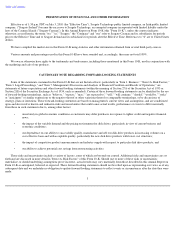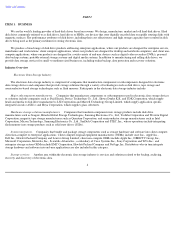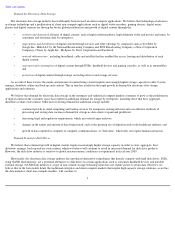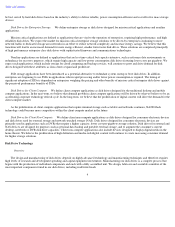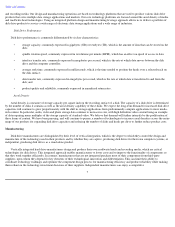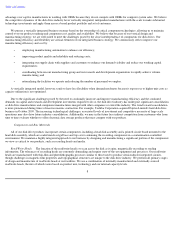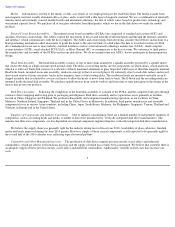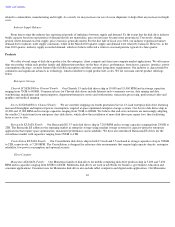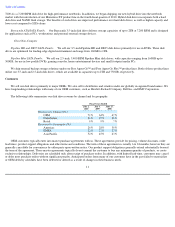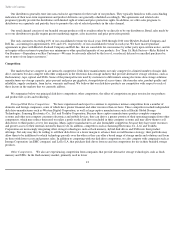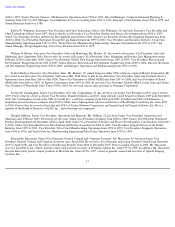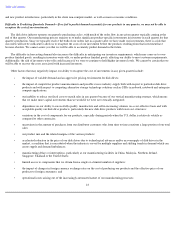Seagate 2009 Annual Report Download - page 15
Download and view the complete annual report
Please find page 15 of the 2009 Seagate annual report below. You can navigate through the pages in the report by either clicking on the pages listed below, or by using the keyword search tool below to find specific information within the annual report.
Table of Contents
capacity handheld devices, our principal competitors include Micron Technology, Inc., Samsung Electronics Co., Ltd., SanDisk Corporation and
Toshiba Corporation. In enterprise applications, where SSDs are used for rapid processing and high volume transactions, our principal SSD
competitors include Hitachi Global Storage Technologies, Intel Corporation and STEC Inc., with others expected to enter in the near future.
Price Erosion. Our industry has been characterized by price declines for disk drive products with comparable capacity, performance and
feature sets ("like-for-like products"). Price declines for like-for-like products ("price erosion") are more pronounced during periods of:
•
economic contraction or industry consolidation in which competitors may use discounted pricing to attempt to maintain or gain
market share;
• few new product introductions when multiple competitors have comparable or alternative product offerings;
•
temporary imbalances between industry supply and demand; and
• seasonally weaker demand, which may cause excess supply.
Disk drive manufacturers typically attempt to offset price erosion with an improved mix of disk drive products characterized by higher
capacity, better performance and additional feature sets and/or product cost reductions.
We expect price erosion in our industry to continue. To remain competitive, we believe it is necessary for industry participants to continue
to introduce new product offerings that utilize advanced technologies ahead of the competition in order to take advantage of potentially higher
initial profit margins and reduced cost structures on these new products.
Product Life Cycles and Changing Technology. Our industry has been characterized by significant advances in technology, which have
contributed to rapid product life cycles. As a result, success in our industry has been dependent to a large extent on the ability to be the first-to-
market with new products, allowing those disk drive manufacturers who introduce new products first to sell those products at a premium until
comparable products are introduced. Also, because our industry is characterized by continuous price erosion, the existence of rapid product life
cycles has necessitated quick achievement of product cost effectiveness. Changing technology also necessitates on-
going investments in research
and development, which may be difficult to recover due to rapid product life cycles and economic declines. Further, there is a continued need to
successfully execute product transitions and new product introductions, as factors such as quality, reliability and manufacturing yields become of
increasing competitive importance.
Seasonality
The disk drive industry traditionally experiences seasonal variability in demand with higher levels of demand in the second half of the
calendar year. This seasonality is driven by consumer spending in the back-to-school season from late summer to fall and the traditional holiday
shopping season from fall to winter. In addition, corporate demand is typically higher during the second half of the calendar year. For most of
fiscal year 2010, our industry observed a muted seasonal pattern as the hard disk drive industry experienced unmet demand due to industry-wide
supply constraints, while in the March 2010 quarter supply and demand were relatively balanced. However, in the June 2010 quarter, industry
supply exceeded demand, which we believe reflected a return to seasonal patterns typical of a June quarter.
Research and Development
We are committed to developing new component technologies, products and alternative storage technologies, including solid state
technology. Our research and development focus is designed to bring
13


